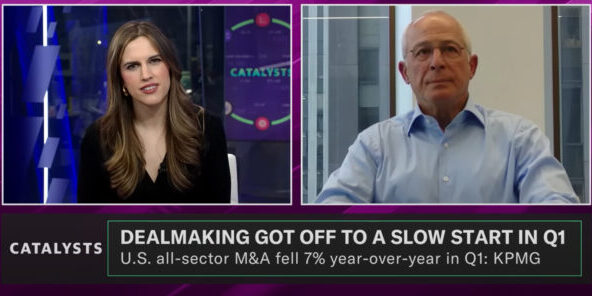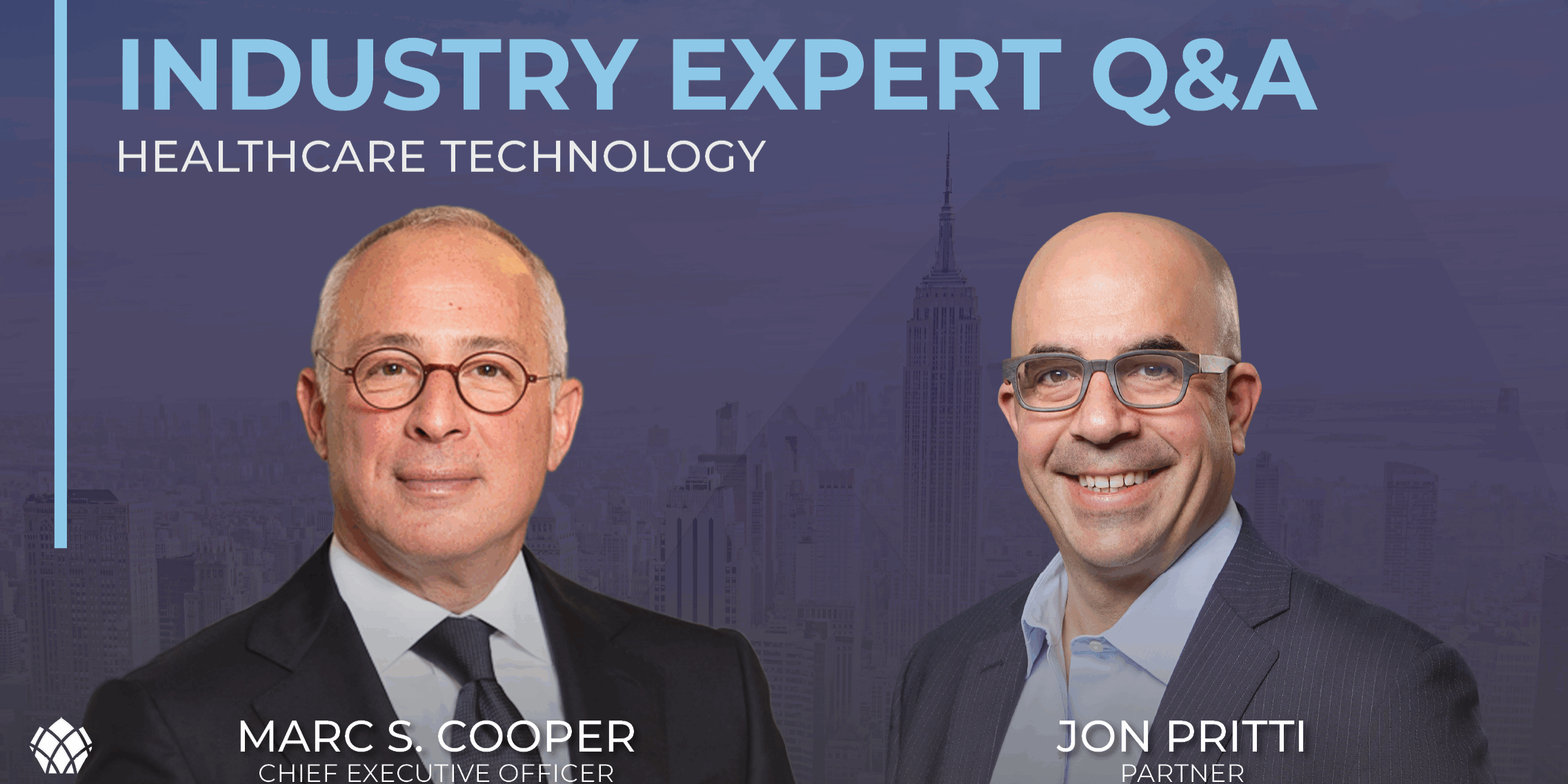Industry Q&A – Marc Cooper with Jon Hammack – April 2022
I recently sat down with Jon Hammack, Managing Director and Head of Healthcare at Solomon Partners. Jon’s been developing our Healthcare business strategy and we talked about his outlook for the healthcare space and recent trends post-pandemic.
1. This July marks your one-year anniversary at Solomon Partners. As you look back, what stands out from your experience so far?
Probably the biggest thing has been the firm’s growth and expansion, both of which are happening much faster than I anticipated. The culture was of course a big reason for me joining, and now that I’m here I can really see how it’s a significant contributor to our momentum. There’s a real sense of collaboration and commitment across the firm that’s exciting and infectious. Success begets success, and for a company like ours that’s deep in culture and deep in industry expertise, it’s no surprise that this is resonating with potential hires.
Another standout has been seeing early success within the Healthcare group. There’s typically a ramp-up period when new bankers join, but we’ve been fortunate to get some nice points on the board early, and have a healthy pipeline of mandates to drive 2022 and beyond.
2. Growing our platform has been a focus for the last several years, and your joining as Head of Healthcare is a big part of that strategy. As you look towards the future, how do you see this vertical growing?
Healthcare is a critical part of the economy and a fundamental part of people’s lives. It accounts for almost 25% of government spending and is one of the largest categories of consumer spending. So it’s no surprise that it has been, and will continue to be, an extremely busy sector. It is also incredibly complex and consists of numerous sub-sectors from an advisory coverage perspective. Our group at Solomon Partners is just scratching the surface from a coverage perspective, and we are actively looking to add senior partners to fill in these gaps.
3. The healthcare sector has evolved dramatically over the last few years, with virtual health, digital therapeutics and medtech becoming established parts of that ecosystem. Do you expect these areas to continue to be critical M&A drivers this year?
Absolutely. Business models are changing and companies are focused on technologies and solutions that lower costs, increase access and drive efficiencies to offer better patient care. More so than ever, there is a convergence of technology, services and products that will help effect this change, and that will continue to be a driver of M&A for this year and beyond. And given the opportunity to drive change, there are massive pools of capital trying to capitalize on these trends, which is an accelerant for M&A activity. It’s an exciting time for healthcare.
4. COVID-19 had a dramatic impact on every aspect of the US economy, perhaps none more so than healthcare. What are some of the biggest ways this sector has forever been changed?
There are numerous learnings from COVID that impacted the healthcare sector – many of which will change the landscape going forward, and unfortunately, some that will be forgotten memories. A few that I believe will have real staying power are telemedicine, technology/data/AI, and supply chain efficiencies. Providing better access to patient care while lowering costs, using data to drive more effective clinical decisions and patient triage, and making sure the healthcare system has the products they need to safely and effectively treat patients are all critical to the new world of healthcare.
5. The M&A environment has cooled down a bit this year, but signs of a thaw are starting to appear. What is your outlook for the healthcare space this year and what trends are you keeping an eye on?
I don’t think many were expecting a repeat of 2021, so the slowdown in the beginning of the year was not completely unexpected. There are plenty of headwinds that we’re seeing – market volatility, continued inflation risk, rising interest rates, and broader geopolitical concerns are something to keep an eye on. Yet despite that, I am cautiously optimistic that we will see a pick-up in M&A activity in the back half of the year, and there are plenty of tailwinds to support that. There are significant amounts of M&A capital waiting to be deployed, rates are still likely to be low relative to historic levels, consumer spending remains high, and the US economy remains resilient despite everything that has been thrown at it so far.





